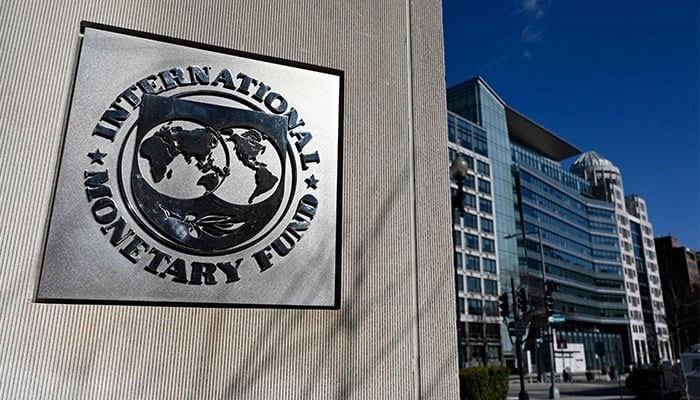How IMF deal cast long shadow on Pakistan’s economy in 2023
Pakistan struck a short-term IMF programme, a $3 billion Standby Arrangement (SBA), to ward off the danger of looming default
ISLAMABAD: At the twilight of the last financial year, Pakistan struck a short-term IMF programme, a $3 billion Standby Arrangement (SBA), to ward off the danger of looming default.
It was the biggest story of 2023, but it also brought a storm of inflationary pressures by strangulating the economy through tightening of fiscal and monetary policies, resulting in negative GDP growth and hiking headline inflation. The food inflation has now crossed the 43 percent mark on a weekly basis, eroding the purchasing power of low and fixed income groups. Under the IMF programme, the policy of one shoe fits all was imposed, and the country plunged into a vicious cycle whereby fiscal expansion became a major source of problems owing to some fundamental structural flaws, such as the inability to expand a narrowed tax base and rigid expenditure structures.
The expansionary fiscal requirements fueled inflation, which resulted in increased demand for tightening of the monetary stance. The tightening of monetary policy resulted in ballooning of debt servicing, which has now assumed the largest single-ticket item on the expenditure head of the country. This is a vicious cycle and there is no easy solution to come out of the lingering quagmire.
This outgoing calendar year 2023 had proved to be another bad year on account of the deteriorating economic front, which was a continuation of the ongoing slide perpetuated in Pakistan’s economy for the last one and a half decades. But it multiplied in 2016-17 in the aftermath of Panama Papers scandal, when economic fundamentals worsened on a daily basis. The last PDM government miserably failed to control this downward slide.
This slide could be gauged from the fact that the country’s total public debt and liabilities stood at Rs29.8 trillion when the PMLN had completed its tenure from 2013-18. Now it has climbed to Rs78 trillion by the end of September 2023 and is inching close to Rs80 trillion mark by the end of 2023.
The GDP growth for 2022-23 had turned negative, while it stood positive at 2.13 percent for the first quarter (July-September) period of the current fiscal year.
The depreciation of rupee against the US dollar, imposition of tax and non-tax measures, hiking of utility prices and the monster of circular debt for the energy sector pushed up the CPI-based headline inflation, which now stands at close to 30 percent. The SPI-based weekly food inflation is hovering over 43 percent, making it really hard for the poor masses to make both ends meet amid persistent stagflation.
The country is now heading towards the highest-ever absolute figures of fiscal deficit for the current fiscal year 2023-24, which would end on June 30, 2024, more than the anticipated CPI-based inflationary projection and maintaining foreign exchange reserves held by the State Bank of Pakistan in the range of $8-9 billion till end of June 2024. The biggest challenge for any government in power in 2024 will be ensuring a smooth transition for striking a fresh bailout package from the IMF after the expiry of the existing $3 billion Standby Arrangement (SBA) in April 2024. For striking a fresh IMF programme in 2024, there might be one potential condition of the Fund team: Pakistan might be asked to clinch a restructuring deal on its foreign debt and liabilities to fill the yawning gap on its external front over the next three years.
So the road is bumpy and starting 2024, the country needs stability on the political and economic fronts. The uncertainty on political and economic fronts will lead us nowhere.
-
 Prince Harry Considering ‘half-in, Half-out’ Royal Role Amid UK Trip?
Prince Harry Considering ‘half-in, Half-out’ Royal Role Amid UK Trip? -
 CBS Finally Airs Trump’s Full Interview 'pulled' Earlier After White House Threatens To Sue
CBS Finally Airs Trump’s Full Interview 'pulled' Earlier After White House Threatens To Sue -
 Robert Irwin Gets Honest About Being In South Africa After 'DWTS' Run In LA
Robert Irwin Gets Honest About Being In South Africa After 'DWTS' Run In LA -
 Queen Elizabeth’s Icy Response To Andrew, Jeffrey Epstein Scandal Revealed
Queen Elizabeth’s Icy Response To Andrew, Jeffrey Epstein Scandal Revealed -
 Trump Vows To Neutralize ‘Russian Threat’ From Greenland, Raising Arctic Stakes
Trump Vows To Neutralize ‘Russian Threat’ From Greenland, Raising Arctic Stakes -
 Green Day Revealed As Super Bowl 2026 Opening Act
Green Day Revealed As Super Bowl 2026 Opening Act -
 Trump's Greenland Tariff ‘blackmail’ Sparks EU Retaliation: Is ‘trade Bazooka’ Next?
Trump's Greenland Tariff ‘blackmail’ Sparks EU Retaliation: Is ‘trade Bazooka’ Next? -
 New Drug Shows Promise In Lowering Dangerous Blood Fats
New Drug Shows Promise In Lowering Dangerous Blood Fats -
 Real Reason Noah Schnapp Was Missing From Finn Wolfhard's 'SNL' Debut Revealed
Real Reason Noah Schnapp Was Missing From Finn Wolfhard's 'SNL' Debut Revealed -
 How Princes William, Harry Were Caught In Early Royal Controversy Involving Charles
How Princes William, Harry Were Caught In Early Royal Controversy Involving Charles -
 Prince Harry’s Absence Leaves Gap For Royal Family Among Young People
Prince Harry’s Absence Leaves Gap For Royal Family Among Young People -
 Karley Scott Collins Breaks Silence On Keith Urban Dating Rumours
Karley Scott Collins Breaks Silence On Keith Urban Dating Rumours -
 Timothee Chalamet Is Still A 'normal Guy,' Says Kevin O'Leary
Timothee Chalamet Is Still A 'normal Guy,' Says Kevin O'Leary -
 Henry Winkler Opens Up On His Special Bond With Adam Sandler: 'Filled With Warmth'
Henry Winkler Opens Up On His Special Bond With Adam Sandler: 'Filled With Warmth' -
 Bruce Springsteen Makes Strong Political Statement
Bruce Springsteen Makes Strong Political Statement -
 Prince Harry Relationship With King Charles 'not Straightforward,' Says Expert
Prince Harry Relationship With King Charles 'not Straightforward,' Says Expert




